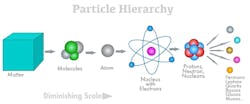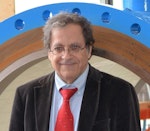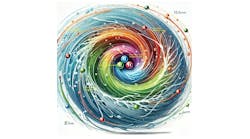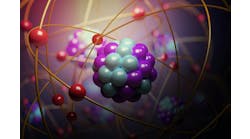The Latin poet Phaedrus said, “Things are not what they seem; the first appearance deceives many.” This ancient saying can be applied to many situations, but it is fitting to describe the way we experience the physical world and the underlying reality of the world described by physics and chemistry. We experience physical objects as solid, durable, colorful and as existing over time. We have faith that the bed we slept in last night will be there tonight. If the bed is made of constantly moving atoms, this is not how we experience it.
Get your subscription to Control's tri-weekly newsletter.
Objective and scientific worlds
British philosopher Bertrand Russell said of the difference between our physical world experience and the scientific world of continually changing matter, “There is … some conflict between what common sense regards as one thing and what physics regards as an unchanging collection of particles. To common sense, a human body is one thing, but to science the matter comprising it is continually changing.” (taken from “Our Knowledge of the External World as a Field for Scientific Method in Philosophy”)
Indivisible element
What composes the matter of science? Is there an indivisible particle? The Greeks believed they found this in the atom. Democritus, who lived from 450-370 BC, was the first person to propose the theory. Democritus theorized that all matter is comprised of tiny, indivisible particles called "atoms" that are constantly moving through empty space, and that the different properties of matter arise from the varying shapes and sizes of these atoms. He believed that atoms are solid, indestructible and cannot be further divided, with their differences in shape determining the characteristics of the materials they form. The word "atom" originates from the ancient Greek word "atomos," which means "indivisible" or "uncuttable."
Today, we know that atoms are not a single, indivisible particle. Instead, they are made up of protons, neutrons and electrons. The protons and neutrons form the nucleus of the atom, while the electrons are orbiting around the nucleus in constant motion. The term “orbit” suggests that the electron is a solid object traveling around the nucleus, somewhat like the moon orbits Earth. However, current thinking is electrons are more like a field of energy than a solid particle, and they exhibit both wavelike and particle-like qualities.
We can take Russell’s world of “continually changing matter” to mean “the world of molecular and atomic motion.” There are six identifiable levels of what is physical, as shown in Figure 1.
Matter is the world of objects as we experience them—solid, observable entities such as rocks, trees, stars and human bodies. These are made up of molecules, which in turn are made up of atoms. Atoms are made up of protons, neutrons and electrons. Protons and neutrons are made up of quarks and other subatomic particles.
We can explain the relations among these six physical levels through the concept of “emergent property.” An emergent property is a property that arises from the interactions of multiple components within a system but is not a property of the individual components themselves. Emergent properties are not predictable from the properties of the individual parts. One example of an emergent property is sports fans performing “the wav.” You can’t understand or perceive the wave by studying the behavior of single individual fans. Yet, the wave can be clearly perceived when the coordinated actions of groups of fans are observed. Another example is the roar of the crowd at a baseball game. The roar of the crowd is the result of the screaming and yelling of hundreds and often thousands of fans. Yet, listening to one fan does not yield this roar; it is only the collective action of many fans that generates “the roar of the crowd.”
A ladder of emergent properties
The properties of solid objects we perceive in real life are emergent properties of the molecules and atoms that make them up. The atoms are moving so fast that they create the appearance of a solid object. The molecules and atoms themselves are not solid, but when they move so rapidly that they create the impression of a solid, three-dimensional object. A similar thought experiment explains the other levels in the diagram. Molecules are an emergent property of their constituent atoms in motion, atoms are an emergent property of the motion of protons, neutrons and electrons. Protons and neutrons are an emergent property of quarks and other subatomic particles.
The world is not as it seems. What we find when we look more deeply into it is a hierarchy of particles that are built on each other (see diagram above). Today, scientists believe that Democritus’ indivisible particles are not his atoms, but subatomic particles such as quarks. Beginning with subatomic particles, we can build a “ladder of emergent properties” until we reach the stable, solid objects of our everyday experience.
Can the concept of emergent properties also explain the relationship between a neural event and a thought, or between brain and mind? Quite possibly, but this is a story for another occasion.






